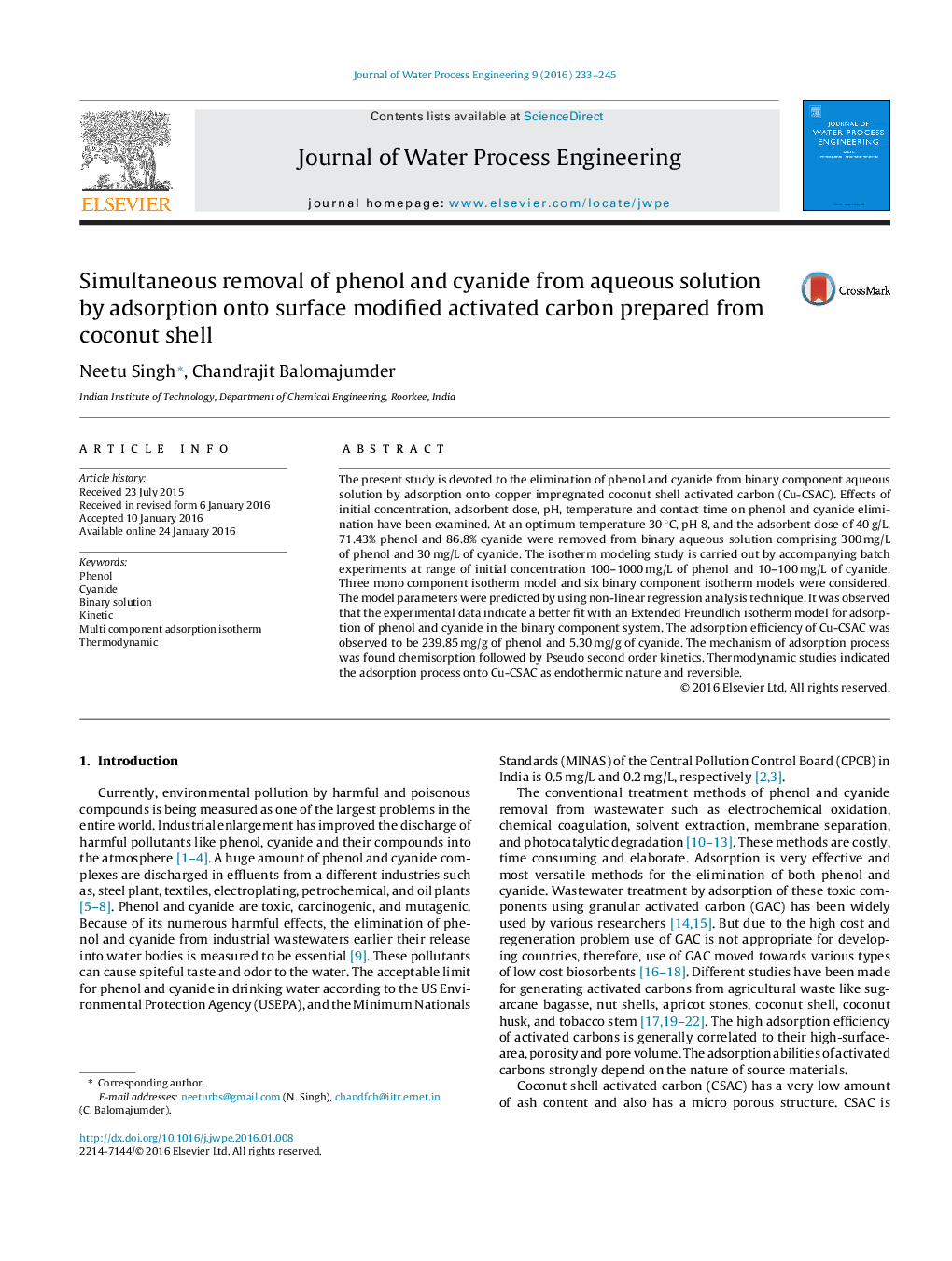| Article ID | Journal | Published Year | Pages | File Type |
|---|---|---|---|---|
| 232486 | Journal of Water Process Engineering | 2016 | 13 Pages |
The present study is devoted to the elimination of phenol and cyanide from binary component aqueous solution by adsorption onto copper impregnated coconut shell activated carbon (Cu-CSAC). Effects of initial concentration, adsorbent dose, pH, temperature and contact time on phenol and cyanide elimination have been examined. At an optimum temperature 30 °C, pH 8, and the adsorbent dose of 40 g/L, 71.43% phenol and 86.8% cyanide were removed from binary aqueous solution comprising 300 mg/L of phenol and 30 mg/L of cyanide. The isotherm modeling study is carried out by accompanying batch experiments at range of initial concentration 100–1000 mg/L of phenol and 10–100 mg/L of cyanide. Three mono component isotherm model and six binary component isotherm models were considered. The model parameters were predicted by using non-linear regression analysis technique. It was observed that the experimental data indicate a better fit with an Extended Freundlich isotherm model for adsorption of phenol and cyanide in the binary component system. The adsorption efficiency of Cu-CSAC was observed to be 239.85 mg/g of phenol and 5.30 mg/g of cyanide. The mechanism of adsorption process was found chemisorption followed by Pseudo second order kinetics. Thermodynamic studies indicated the adsorption process onto Cu-CSAC as endothermic nature and reversible.
